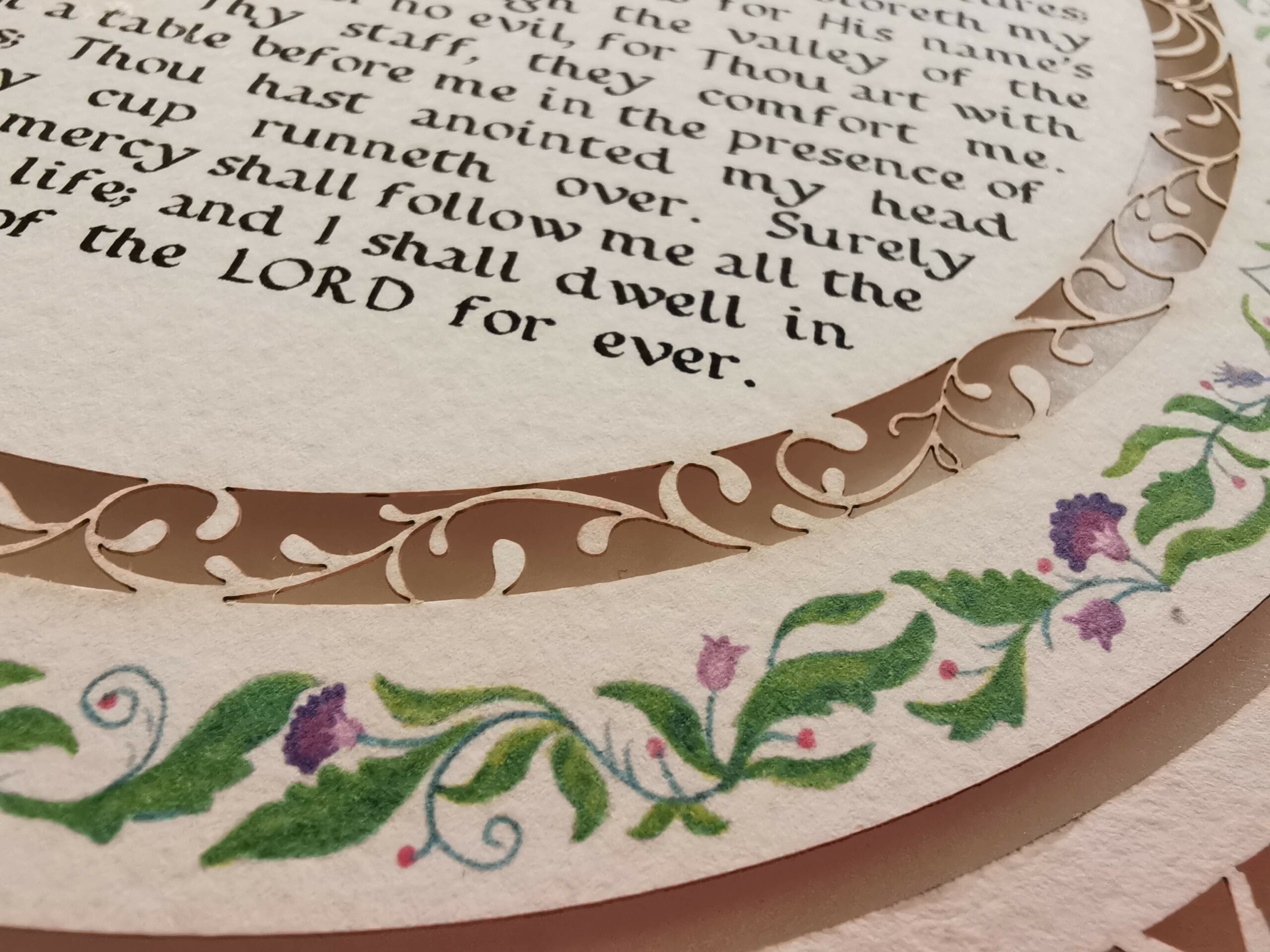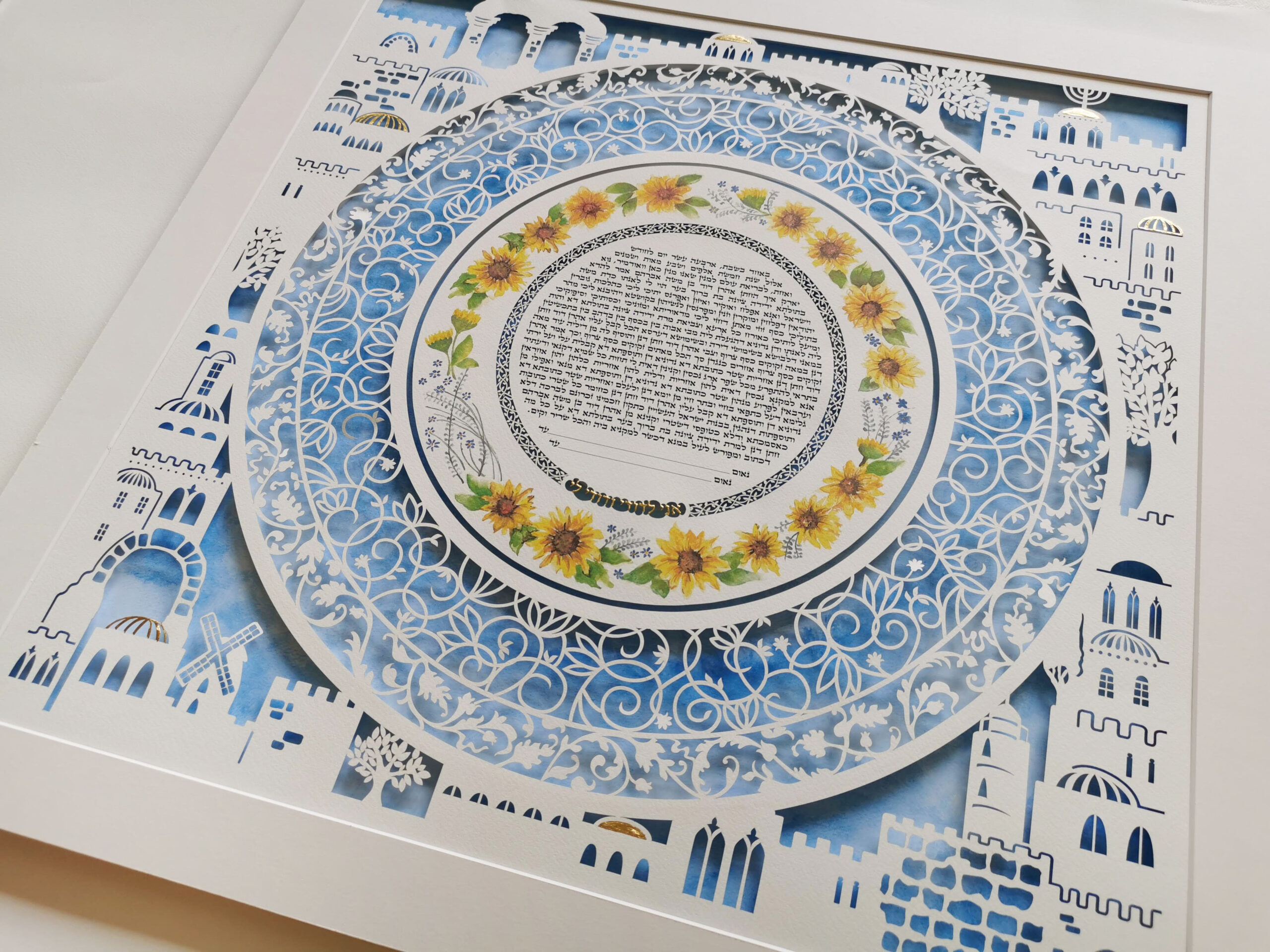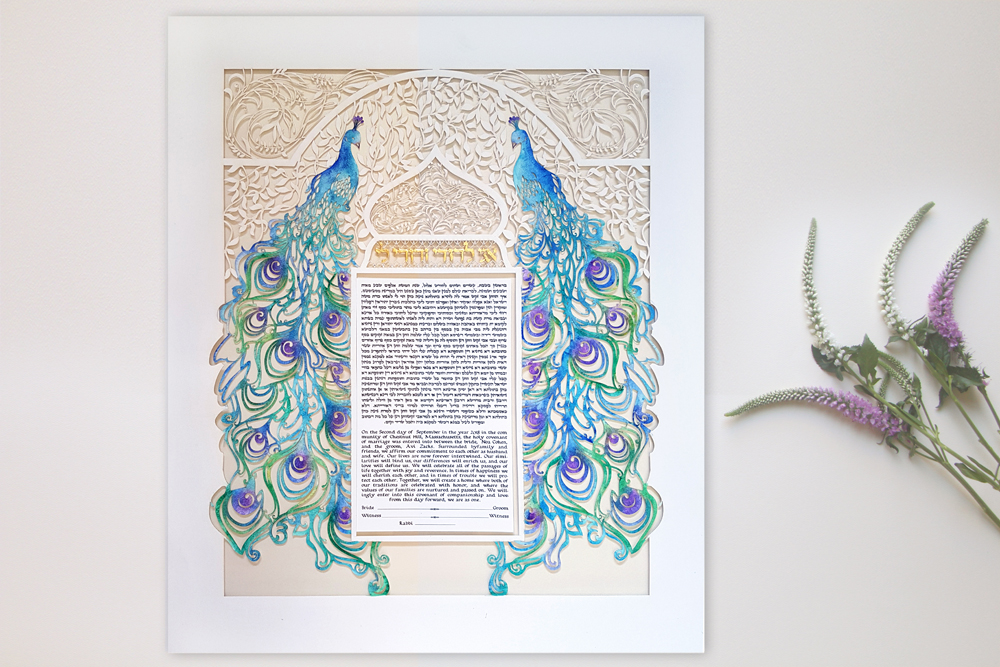
This review explores the dichotomy between traditional and modern Ketubah designs, delving into their distinct characteristics, cultural implications, and the preferences of contemporary couples. It provides a deep analysis of the aesthetic, emotional, and symbolic values that each style entails, offering valuable insights for couples planning a Jewish wedding.
1. The Evolution of Ketubah Art: A Retrospective Look?
Throughout history, the art of ketubah design has undergone a remarkable evolution. From its origins in ancient Jewish culture to the present day, the ketubah has transformed into a beautiful and meaningful piece of artwork that symbolizes the union of two individuals in marriage. In the early days, ketubahs were simple and primarily focused on textual content, serving as a legal contract between the bride and groom. However, as time went on, the artistic elements of the ketubah began to emerge, reflecting the cultural and artistic trends of the time.
The evolution of ketubah art can be seen in the changing styles, techniques, and materials used. In ancient times, ketubahs were often written on parchment or vellum and adorned with intricate calligraphy. As the centuries passed, illuminated manuscripts became popular, featuring elaborate illustrations and decorative motifs. These designs were influenced by the artistic styles of the regions in which they were created, including Byzantine, Moorish, and Renaissance art.
In more recent times, ketubah art has become increasingly diverse and personalized. Artists have embraced various mediums, such as painting, printmaking, and digital art, to create unique ketubah designs that cater to individual preferences and cultural backgrounds. Modern ketubahs often incorporate elements of contemporary art, including abstract forms, vibrant colors, and mixed media.
The evolution of ketubah art is not only a reflection of changing artistic trends but also a testament to the evolving role of the ketubah itself. While it still serves as a legal document, the ketubah has also become a cherished keepsake and a symbol of love and commitment. Couples now seek ketubah designs that not only capture their personal style but also embody their values and beliefs.
<img src=”https://blackhat.org.il/wp-content/uploads/sites/18/2023/06/0SqCQhqHjq.png” alt=”1. An illustration showing the transformation of Ketubah design over centuries” />
1. An illustration showing the transformation of Ketubah design over centuries
2. ‘The Beauty of Tradition’: The Aesthetics of Traditional Ketubah Designs
Traditional ketubah designs hold a timeless beauty that continues to captivate couples and art enthusiasts alike. Rooted in centuries-old customs and religious symbolism, these designs exude a sense of elegance and reverence. One of the defining characteristics of traditional ketubahs is the use of intricate calligraphy, where skilled scribes painstakingly handwrite the text of the ketubah in Hebrew. The flowing curves and delicate strokes of the letters create a visually stunning display, adding a touch of old-world charm to the artwork.
In addition to the calligraphy, traditional ketubah designs often incorporate ornate borders and decorative motifs. These elements draw inspiration from Jewish iconography, such as the Star of David, the Tree of Life, and the Hamsa. These symbols hold deep meaning within Jewish culture and are thought to bring blessings, protection, and good fortune to the couple. The intricate details and careful craftsmanship of these traditional designs reflect the importance placed on the sanctity of marriage and the commitment being made.
The color palette used in traditional ketubah designs is often rich and symbolic. Deep blues, golds, and reds are commonly seen, representing themes of spirituality, prosperity, and love. These colors not only add visual interest but also contribute to the overall emotional impact of the artwork.
3. Modern Ketubah Designs: A Reflection of Contemporary Values?
As society evolves, so too do the aesthetics and designs of ketubahs. Modern ketubah designs have emerged as a way for couples to express their unique personalities and reflect their contemporary values. These designs often break away from the traditional mold, embracing a more eclectic and diverse range of styles.
- 1. Embracing Individuality:
One of the key characteristics of modern ketubah designs is the emphasis on individuality. Couples are no longer bound by strict religious or cultural conventions, allowing them to choose designs that truly resonate with their personal tastes and beliefs. From minimalist and abstract designs to bold and vibrant illustrations, modern ketubahs offer a wide array of options for couples to find a design that speaks to their unique style. - 2. Incorporating Personalized Elements:
Modern ketubah designs also allow couples to incorporate personalized elements that hold special meaning to them. This may include incorporating elements from their love story, such as the location of their first date or a favorite quote, or incorporating symbols that hold personal significance. By infusing their ketubah with these personal touches, couples create a truly one-of-a-kind piece of art that reflects their love and commitment. - 3. Breaking Boundaries:
Modern ketubah designs often challenge traditional gender roles and inclusivity. These designs may feature imagery and symbolism that celebrates diverse relationships, such as same-sex couples or interfaith marriages. By embracing these diverse representations, modern ketubah designs celebrate love and inclusivity, reflecting contemporary values of equality and acceptance.

3. A modern Ketubah design featuring abstract imagery and vibrant colors
4. How do couples choose? The Influence of Personal Taste and Cultural Identity
Choosing a ketubah design is a deeply personal decision for couples, influenced by their individual tastes and cultural identities. While some couples may gravitate towards traditional designs that align with their religious or cultural backgrounds, others may opt for more modern and eclectic designs that reflect their contemporary values. Personal taste plays a significant role in the decision-making process, with couples considering their preferences for color schemes, art styles, and overall aesthetics.
Cultural identity also plays a crucial role in the selection of a ketubah design. For couples who strongly identify with their cultural heritage, choosing a ketubah that incorporates traditional elements and symbolism is a way to honor their roots and connect with their ancestors. These designs often feature motifs and imagery that are culturally significant, such as Hebrew calligraphy, Jewish symbols, or intricate patterns inspired by Middle Eastern or Eastern European traditions.
On the other hand, some couples may have a more diverse cultural background or may not strongly identify with any particular cultural tradition. For them, the selection process may be more focused on finding a design that resonates with their personal values and aesthetic preferences. They may choose designs that are minimalist, abstract, or contemporary, allowing them to create a ketubah that reflects their own unique love story without being tied to any specific cultural or religious symbolism.
5. ‘Art that Speaks’: The Role of Symbolism in Ketubah Designs
Symbolism plays a significant role in ketubah designs, as it adds depth and meaning to the artwork. Many traditional ketubah designs incorporate symbols that hold cultural or religious significance, serving as a visual representation of the couple’s values and beliefs. These symbols can range from the Star of David, representing Jewish faith, to the Tree of Life, symbolizing fertility and a strong foundation for the couple’s future.
In modern ketubah designs, symbolism is often used to convey personal narratives and unique love stories. Couples may choose symbols that hold personal meaning to them, such as a specific flower that represents their shared memories or an animal that symbolizes their qualities and aspirations. These symbols allow the couple to infuse their ketubah with their own story, making it a truly personalized piece of art.
Furthermore, the use of colors in ketubah designs can also carry symbolic significance. For example, the color blue is often associated with trust, loyalty, and stability, while red can symbolize passion and love. The careful selection of colors can enhance the overall message of the ketubah and evoke specific emotions.

5. An image highlighting symbolic elements in a Ketubah design
6. Are Modern Designs Overshadowing Tradition?
In the realm of ketubah designs, modern aesthetics have gained popularity in recent years, leading to the question of whether modern designs are overshadowing traditional ones. However, it is important to recognize that both traditional and modern ketubah designs hold their own unique charm and significance, catering to different preferences and cultural contexts.
- 1. Embracing Change while Honoring Tradition:
Modern ketubah designs are often celebrated for their fresh and contemporary approach, incorporating minimalist styles, abstract art, and bold color palettes. These designs appeal to couples who seek a ketubah that reflects their modern sensibilities and resonates with their personal taste. However, it is essential to acknowledge that traditional ketubah designs hold a rich history and cultural significance. They serve as a link to our ancestral traditions and serve as a reminder of our roots and heritage. - 2. Bridging the Gap:
Rather than overshadowing tradition, modern ketubah designs can be seen as bridging the gap between the past and the present. Many contemporary designs still incorporate traditional elements, such as Hebrew calligraphy, ancient motifs, and traditional symbols. This fusion of old and new allows couples to maintain a connection to their cultural heritage while embracing a more modern aesthetic. - 3. The Power of Choice:
One of the beauties of the ketubah tradition is the freedom it grants to couples to choose the design that resonates most with them. Some couples may gravitate towards traditional designs because they value the historical and cultural significance. Others may prefer modern designs as they align better with their personal style and contemporary values. Instead of overshadowing each other, both traditional and modern designs offer options and cater to the diverse needs and preferences of couples.
7. The Ketubah: More Than Just a Marriage Contract?
The ketubah, often referred to as a marriage contract, holds far more significance than its legal implications. It serves as a tangible symbol of love, commitment, and the shared journey of a couple. Beyond the legal aspects, the ketubah encapsulates the emotional and spiritual bond between partners, as well as their shared values and aspirations. It is a testament to the unique story of their union and a reflection of their hopes for a harmonious and fulfilling life together.
The ketubah acts as a visual representation of the promises and obligations that the couple makes to each other. It outlines the rights and responsibilities of each partner, fostering a sense of mutual respect and understanding. However, it goes beyond a mere contractual agreement by capturing the essence of the couple’s relationship. It is a declaration of their love, commitment, and the shared vision they have for their future.
Traditionally, the ketubah was designed to be displayed prominently in the couple’s home, serving as a constant reminder of their sacred bond. It becomes a cherished piece of art that celebrates their love story and serves as a source of inspiration during challenging times. The intricate artwork and meaningful text on the ketubah contribute to its significance, making it a keepsake that holds sentimental value for generations to come.
In addition, the ketubah serves as a connection to the couple’s cultural and religious heritage. It incorporates elements of tradition and symbolism that are meaningful to their specific backgrounds. Whether it is through Hebrew calligraphy, traditional motifs, or religious symbols, the ketubah becomes a link to their roots and a way to honor their ancestors.

7. A beautifully framed Ketubah on a home wall, symbolizing its importance beyond the wedding day
In conclusion, both traditional and modern Ketubah designs have their unique charm and significance. The choice depends on the couple’s personal taste, cultural affinity, and desired symbolism. While the traditional designs keep us rooted in rich Jewish history, modern designs reflect the evolving societal norms and personal expressions of love and commitment. Indeed, the beauty of the Ketubah lies not just in its design but in the vows and promises it embodies.
Recent Comments